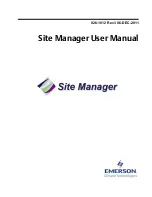
Managing IPX 20-15
Modem Considerations
Modem Considerations
Dial-In Modems
Keep the following in mind when using dial-in modems attached to the network access
server:
•
Flow control for the dial-in modem and the access server port must match. CTS is
recommended for DECserver 700 and DECserver 900TM. XON/XOFF is
recommended for DECserver 90M and DECserver 90TL.
•
Serial speed for the modem can be configured as high as 115,200 bits/s for the
DECserver 700 and DECserver 900TM and as high as 57,600 bits/s for the
DECserver 90M and DECserver 90TL. The access server port will autobaud up to
this speed when the port is configured for autobaud.
•
When autobaud is enabled, in most cases, typing a carriage return once per second
is sufficient to autobaud into the access server when the modem dial-in connection
is complete. In some cases (AppleTalk, for example), it may be necessary to type
a series of three carriage returns at a faster rate for a successful autobaud.
•
Modem DSR must be configured to cycle on modem hang-up. The access server
port is configured to log out the port when DSR cycles, making sure that the
Novell network connection goes away when the PC user is finished.
•
Use the fastest modem available. Error-correcting modems that are currently
available provide up to 28,800 bits/s carrier speeds and serial port speeds to
115,200 bits/s. The access server serial ports will autobaud up to 115,200 bits/s.
Dial-Out PC Modems
Keep the following in mind when using dial-out modems attached to the PC:
•
The PC should have a high-performance UART chip capable of high speeds
(16450 or 16550). The serial port baud rate of the modem is dependent on the
UART and the type of modem used.
•
Normally, set the serial port baud rate of the modem to two to four times the speed
of your modem. The 8250 and 16450 UART chips can be more susceptible to
lower performance due to errors when run at higher speeds.
Summary of Contents for Digital NetRider
Page 26: ......
Page 32: ......
Page 52: ......
Page 78: ......
Page 90: ......
Page 142: ......
Page 158: ......
Page 196: ...11 2 Configuring and Managing Interactive Devices Managing Users Managing Sessions ...
Page 246: ......
Page 268: ......
Page 312: ......
Page 374: ......
Page 428: ......
Page 446: ......
Page 486: ......
















































